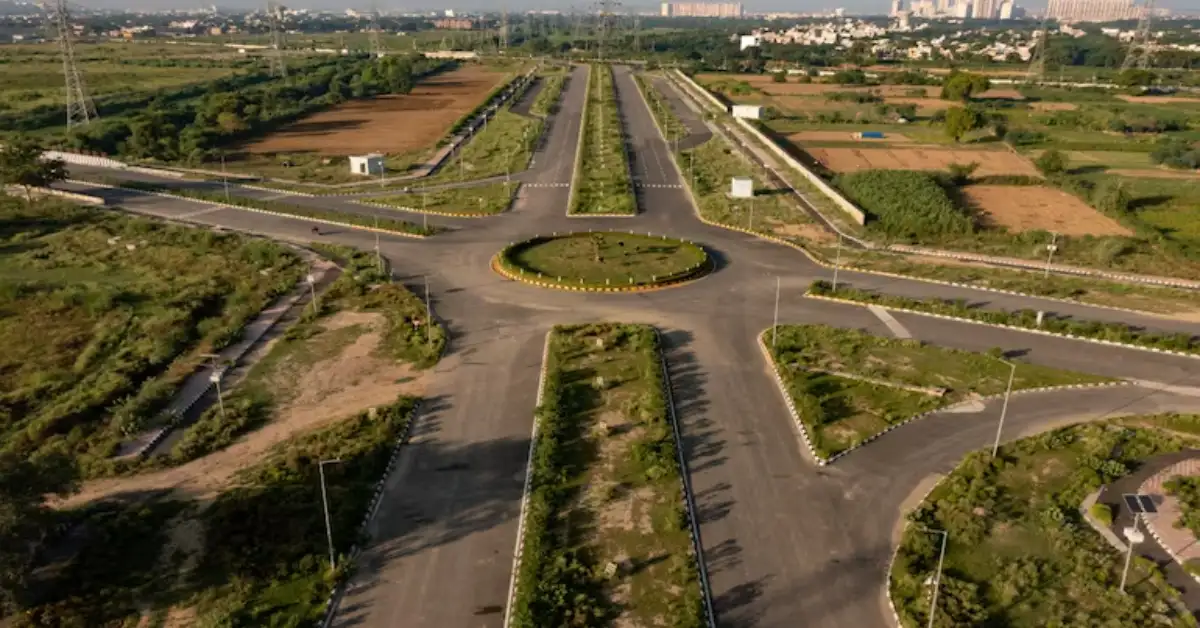From a town located on the outskirts of Delhi, Sonipat has turned into a promising real estate destination, being driven by a combination of infrastructure upgrades, improved connectivity, industrial growth, and relatively affordable property prices. Located along the Delhi-Haryana industrial corridor, the region is increasingly catching the eye of both domestic and international investors. Its strategic location close to the NCR is a key factor behind the rising interest, with many experts predicting that Sonipat will be among the top-performing real estate markets by 2030.
Adding to this momentum is the Haryana government’s ambitious Sonipat Master Plan 2031. With a budget of ₹20,220 crore, the plan aims to develop the city into a modern urban centre capable of housing up to 2.5 million people. It includes 7,071 hectares earmarked for integrated townships and 606 hectares set aside for commercial development.
Besides, a slew of infrastructure projects is set to reshape Sonipat’s real estate landscape, pushing the city closer to becoming a key urban hub in the NCR. Among the most significant developments are the upcoming Delhi–Sonipat–Panipat Regional Rapid Transit System (RRTS), the extension of Delhi Metro’s Yellow Line, Urban Extension Road II (UER-II), and the proposed Delhi-Mumbai Industrial Corridor (DMIC). On March 25, 2025, the Ministry of Housing and Urban Affairs gave in-principle approval to extend the Metro’s Yellow Line from Samaypur Badli to Sonipat via Nathupur, which will significantly cut commute times and enhance last-mile connectivity.
Meanwhile, the high-speed RRTS corridor being developed by the National Capital Region Transport Corporation (NCRTC) will connect Delhi to Panipat in just an hour. This rapid link is likely to spur both residential and commercial development along its route, particularly in and around Sonipat.
UER-II, another key project, will link Sonipat with Gurugram, Dwarka, and the industrial clusters of Bawana, Narela, and Rohini—bringing a major connectivity boost to the city. Adding further weight to Sonipat’s growth story, Maruti Suzuki is in the process of setting up a manufacturing facility here, expected to create jobs and attract a host of ancillary industries, and strengthen both the industrial and real estate ecosystem.
According to real estate experts, plans are underway to develop smart industrial parks and logistic hubs, attracting both domestic and international investments. Sonipat and its nearby areas like Rai, Kundli, and sectors along NH-44 are witnessing increased demand for residential, commercial, and mixed-use developments. The anticipated population influx is driving demand for affordable housing solutions, prompting developers to focus on plotted developments and group housing projects.
Gurpal Singh Chawla, Managing Director, TREVOC Group, says, “Peripheral areas of NCR have gone beyond the label of satellite towns. Tier 2 cities of Haryana, like Sohna, Sonipat, Panipat, Kundli, Karnal, and more, are becoming the talk of the town in terms of the growth they project. While Sohna is becoming a key node on the Delhi-Mumbai Industrial Corridor, propelled by the Gurugram-Sohna Elevated Road and the proposed metro extension, Sonipat is preparing for a game-changing metro link to Delhi and direct access via the UER-II. Meanwhile, Panipat is on the cusp of transformation with the Delhi–Panipat RRTS slashing travel time significantly. These aren’t isolated upgrades; they’re stitching together a new growth arc that’s giving the region a new face where people can live, work, and invest across NCR.
Honeyy Katiyal, Founder, Investors Clinic Infratech Pvt Ltd , says, “Beyond connectivity, Sonipat’s growth also lies in its industrial surge. Driven by the Rs 18,000-crore Maruti Suzuki plant and the development push under the Delhi-Mumbai Industrial Corridor, the region is turning into an economic engine, introducing structural growth in the city. When industries move in, jobs follow, and with that comes the sustained demand for housing, retail, and commercial infrastructure. Reputed developers like Godrej Properties, Hero Realty, Eldeco Group, and more have started their expansion into the Sonipat market. This demand positions the region as a self-sufficient growth centre, and those who invest now, we believe, could ride a long-term upward curve in both value and demand.”
Therefore, with policy support, big-ticket infrastructure projects, and growing investor confidence, Sonipat is no longer just a peripheral town; it’s positioning itself as a vital node in the future growth story of the NCR. As major developers stake their claim and industries lay the groundwork for long-term economic activity, Sonipat is steadily evolving into a self-sustaining urban centre.






